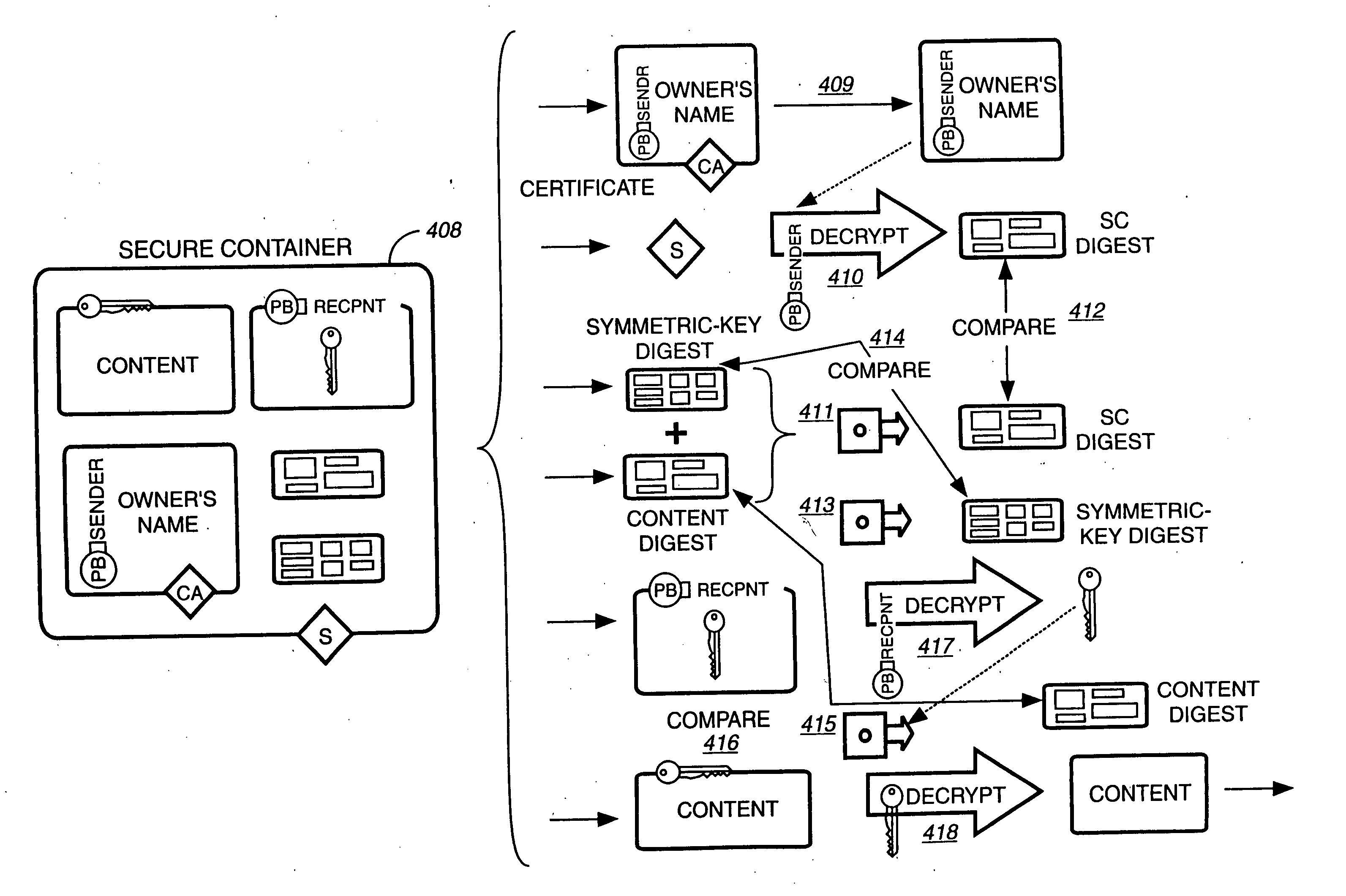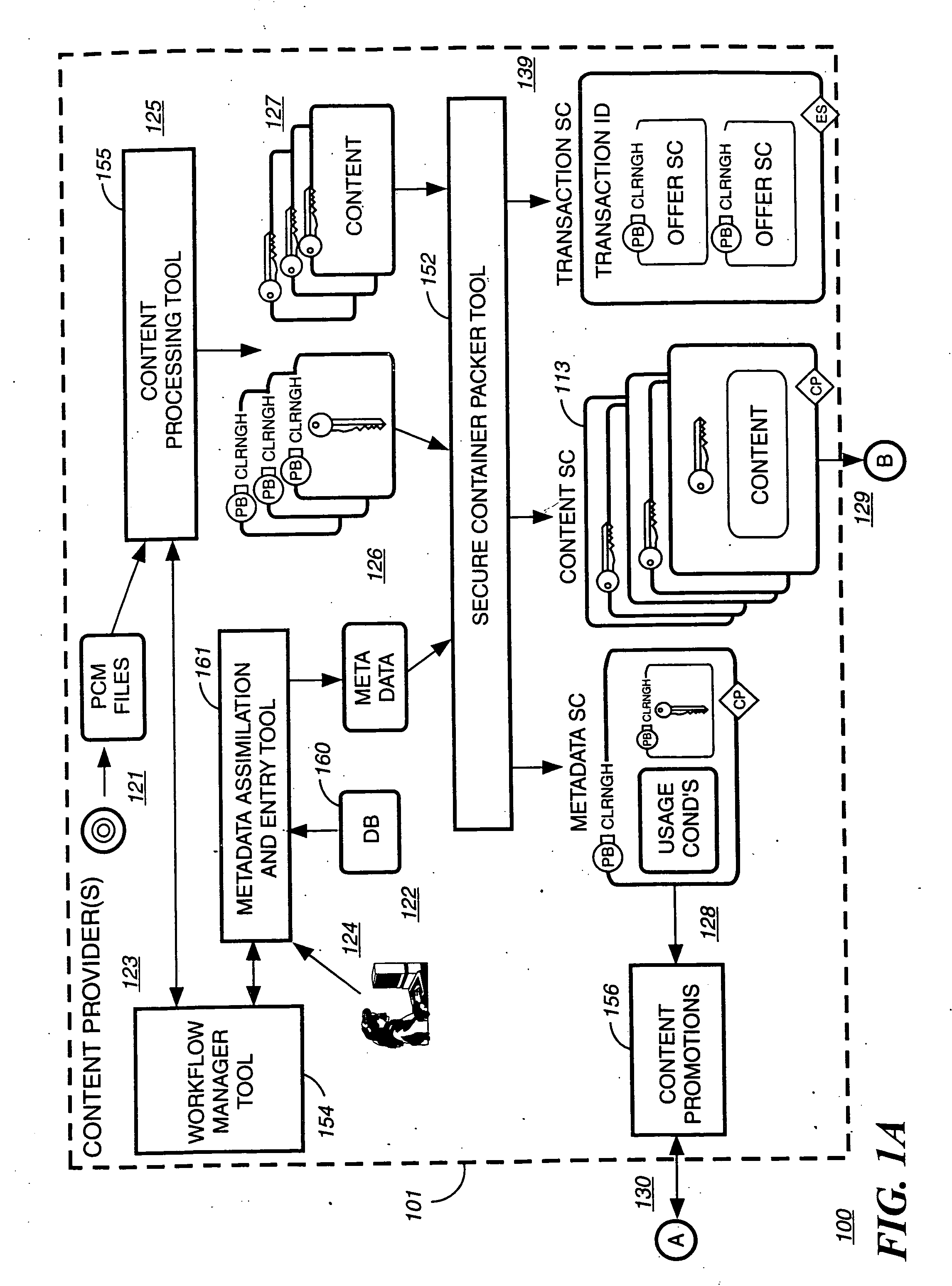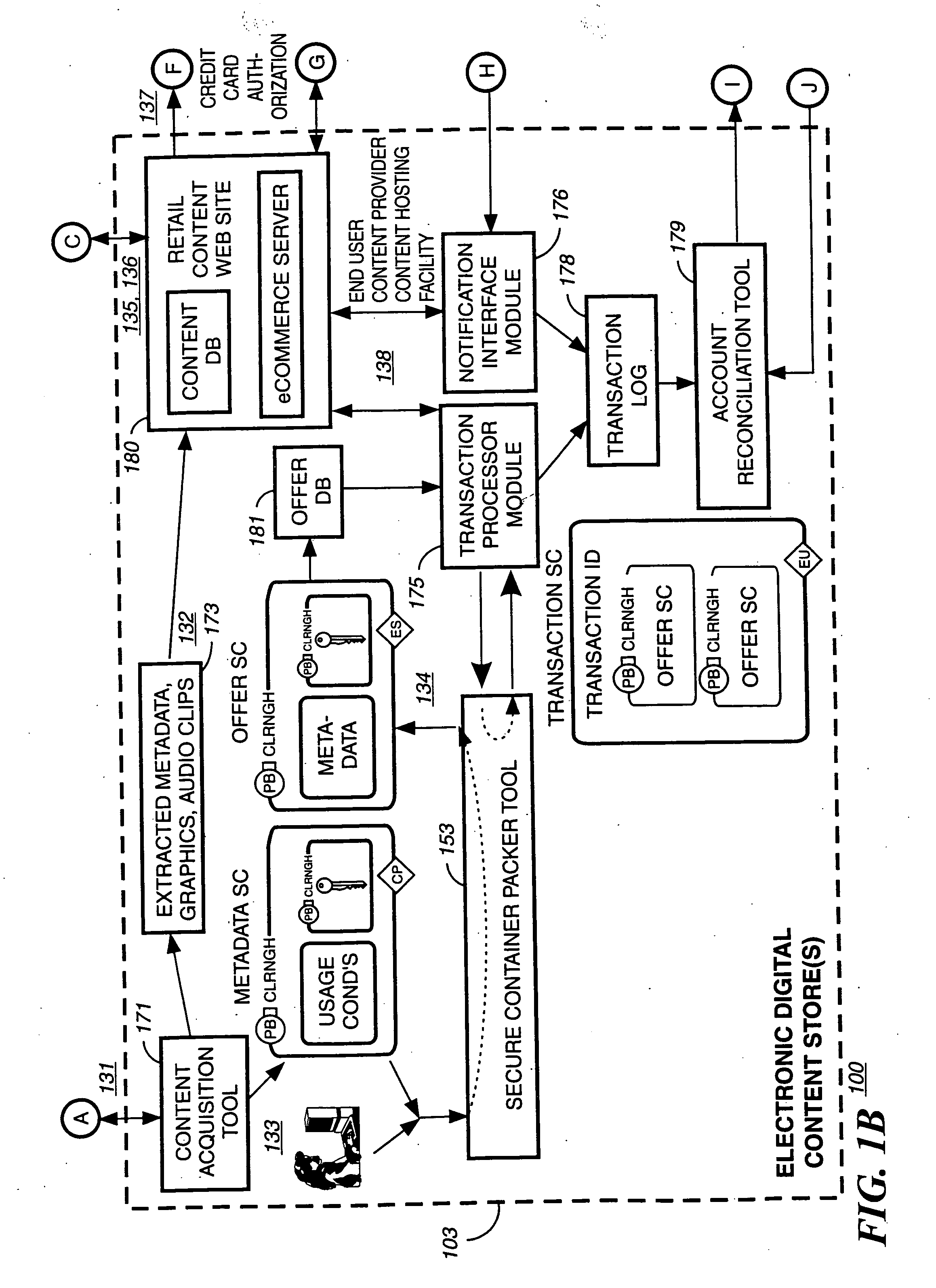Digital content distribution using web broadcasting services
a digital content and web broadcasting technology, applied in the field of electronic commerce, can solve the problems of unauthorized re-distribution of digital content by end-users, slow adoption by owners and publishers of valuable digital content by internet users, and easy access to digital content for unauthorized re-distribution
- Summary
- Abstract
- Description
- Claims
- Application Information
AI Technical Summary
Problems solved by technology
Method used
Image
Examples
embodiment
1. Multi-Tier Digital TV Embodiment
[0747] Turning now to FIG. 18, shown is a high level logical diagram of an alternate embodiment of electronic distribution of digital content using broadcast infrastructure, according to the present invention. In this embodiment, the Content Provider(s) 101, as previously described above in FIG. 6, provide Metadata SC(s) 620 to one or more Electronic Digital Content Store(s) 103 and a Content SC(s) 630 to one or more Content Host Site(s) 111. The Electronic Store(s) 103 customized the Metadata SC(s) 620 to create an Offer SC(s) 641. The Offer SC(s) 641 is sent to one or more Broadcast Center(s) 1802. In addition, the Content SC(s) 630 corresponding to the MetaData SC(s) 620 are sent to the Broadcast Center(s) 1802 from one or more Content Host(s) 111. The Offer SC(s) 641 is sent via broadcast infrastructure such as satellite, cable, Direct TV or other broadcast mechanisms to one or more End User Device(s) 109. In this embodiment, the End User Devic...
PUM
 Login to View More
Login to View More Abstract
Description
Claims
Application Information
 Login to View More
Login to View More - R&D
- Intellectual Property
- Life Sciences
- Materials
- Tech Scout
- Unparalleled Data Quality
- Higher Quality Content
- 60% Fewer Hallucinations
Browse by: Latest US Patents, China's latest patents, Technical Efficacy Thesaurus, Application Domain, Technology Topic, Popular Technical Reports.
© 2025 PatSnap. All rights reserved.Legal|Privacy policy|Modern Slavery Act Transparency Statement|Sitemap|About US| Contact US: help@patsnap.com



